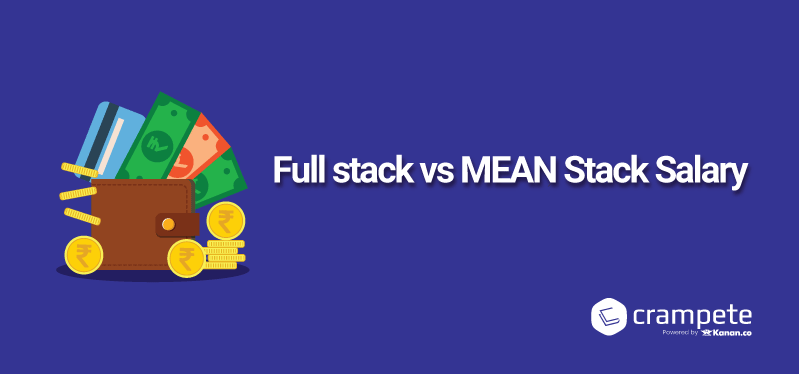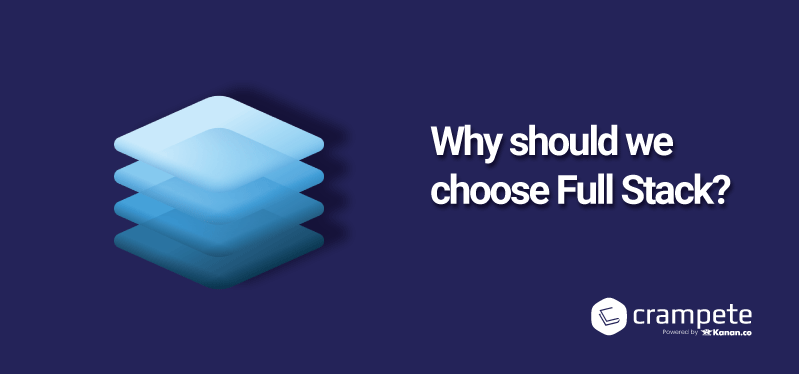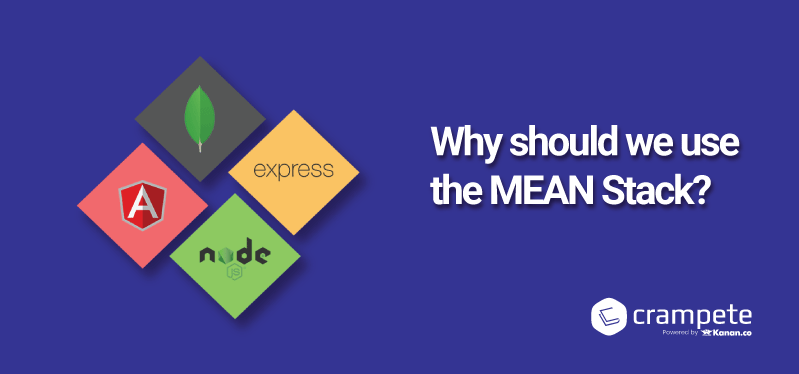
Full stack vs Mean stack: Learn the difference
In web development, mastering a group of programming languages and tools for both front-end and back-end is known as full-stack. MEAN stack, an advanced framework, has gained popularity with its combination of MongoDB, Express.js, AngularJS, and NodeJS. On comparing Full stack vs Mean stack the full-stack covers a broader range, MEAN stack offers a comprehensive solution. In this blog,you will learn about the differences between these two.
Let's start by understanding the basics of Web Development before knowing Full Stack vs Mean Stack!
TABLE OF CONTENT
- What is web development?
- What is frontend web development?
- What is backend web development?
- Difference between full stack and mean stack
- Full stack vs mean stack salary
- Roles and Responsibilities
- Why should we use the mean stack?
- Roles and responsibilities
- Mean stack vs full stack : which is better
What is Web Development?
Web Development involves designing and developing websites or web applications for various purposes, including organizational and personal use. It comprises two components:
- Frontend Web Development
- Backend Web Development.
Frontend Web Development:
Frontend Web Development, also known as client-side development, encompasses managing web applications and creating interactive websites using CSS, HTML5, and JavaScript. The continuing website updates that need regular attention must be constantly monitored by a frontend developer.
Backend Web Development:
Backend Web Development, also referred to as server-side development, focuses around databases, scripting, and coding. It involves handling data storage and retrieval from databases while integrating with the front end. Various web-based tools and techniques are utilized to bring these components of Web Development together.
Full Stack Developers tackle frontend, backend, and other APIs, whereas MEAN Stack focuses solely on a specific set of frameworks, including MongoDB, ExpressJS, AngularJS, and NodeJS.
By now, you should be clear with the concepts of Full Stack and MEAN Stack. Now, let's get deeper into these frameworks and explore why you might choose Full Stack or MEAN Stack. Keep reading to find out more!
Difference between Full Stack and MEAN Stack
| MEAN STACK DEVELOPER | FULL STACK DEVELOPER |
| A MEAN stack developer is an IT professional who utilizes a collection of JavaScript technologies, where MEAN stands for MongoDB, ExpressJs, AngularJs, and NodeJS, to develop web applications. | A full stack developer is an IT professional specializing in both server-side and client-side software development, equipped with knowledge across a set of diverse technologies. |
| MEAN stack development comprises four powerful full-stack technologies, forming the building blocks for comprehensive applications. It plays a pivotal role in the broader realm of full-stack development. | A full-stack developer possesses expertise in all the web development frameworks, technologies, and programming languages essential for crafting a fully functional website. |
| This offers developers extensive facilitation, especially when employing the Angular front-end framework. | In this scenario, developers have the freedom to leverage an array of front-end development frameworks, choosing from a diverse pool of front-end technologies. |
| In this context, developers are empowered to utilize node.js, enabling them to write server-side code using JavaScript. | However, in this case, developers can leverage the advantages of a robust server-side programming language. |
| There exists a singular database, namely MongoDB. | In this case, developers have the opportunity to work with a multitude of databases, such as MySQL, SQL Server, Oracle, and mo |
| It embraces a simulated full-stack approach, where both sides of programming code are written in JavaScript. | The front-end and back-end aspects can be obtained simultaneously, streamlining the development process. |
| MEAN stack typically denotes a comprehensive full-stack development framework. | In general, full-stack pertains to an all-encompassing development process that relies on the specified technologies. |
| Incorporates the Breadth-First Search (BFS) technique. | Need to study Breadth-First Search (BFS) |
Full stack vs MEAN Stack Salary

According to Neuvoo reports, the average salary paid to MEAN Stack Developers in India is around ₹900,000 per year, and in the United States, it is around US$120,000 per year. And as per the analysis of Glassdoor, The average income of Full Stack Developers in India is around ₹695,737 per year, and in the United States, it is around US$105,813 per year. However, salary figures may vary based on factors such as experience, location, and company size.
Why should we choose Full Stack?

A Full Stack Developer is proficient in both frontend and backend technologies, allowing them to design and develop interactive web applications, mobile applications, databases, testing, and many more. They possess the ability to work across the entire software development process, from creating user interfaces to managing databases and server-side functionalities. The demand for Full Stack Developers has significantly increased due to their versatility and efficiency. Employers seek them out as they can handle diverse tasks, leading to reduced development costs and improved time-to-market.
Roles and Responsibilities
Let's explore the significant responsibilities that companies worldwide entrust to Full Stack Developers.
- To work with product managers and development teams to come up with software solutions
- To create a server-side and client-side architecture.
- To create applications' front-ends using eye-catching graphic design
- To create and maintain effective databases and applications.
- Responsible to create efficient APIs
Why should we use the MEAN Stack?
MEAN Stack comprises JavaScript-based technologies for creating intricate websites and responsive mobile apps—a full-fledged JavaScript framework. Assembled from open-source frameworks like MongoDB, ExpressJS, AngularJS, and NodeJS, MEAN Stack facilitates the seamless design of mobile apps and websites with remarkable ease.

MEAN Stack, the cutting-edge trending development framework, empowers global developers to focus on complex project aspects consisting of multiple tools and plugins. Let's get into the four full-fledged JavaScript frameworks that form MEAN Stack.
MongoDB: MongoDB is a NoSQL database used for storing high volume of data. It efficiently stores vast data using documents and collections, where documents represent key-value pairs and collections resemble relational database tables with functions and documents.
ExpressJS: ExpressJs, a standard server framework for Node.js applications, aids in developing multi-page, hybrid-page, and single-page web applications.
AngularJS: It is a structural framework for dynamic web apps similar to javascript framework, allowing HTML as a template language and extending its syntax for clear and concise application components.
NodeJS: It’s an open-source and cross-platform framework, ideal for creating networking and server-side applications. NodeJS offers a wide array of libraries with diverse JavaScript models, streamlining the development process.
Vue.JS: Vue.js enhances standard HTML, CSS, and JavaScript, offering a declarative and component-based programming model for efficient development of user interfaces, from simple to complex.
Roles and responsibilities
- Responsible to operate proficiently with a range of frameworks and databases, with a primary focus on MongoDB, AngularJS, NodeJS, and ExpressJS
- To excel in the creation, testing, and deployment of client-specific products, meeting their unique requirements.
- To create and manage extensive databases, encompassing both rational and non-rational data storage solutions.
- Responsible for working hands-on with diverse tools and software, honing their technical expertise.
- To take charge of product deployment, skillfully analyzing the underlying reasons behind each decision.
Mean stack vs full stack : Which is better
This blog showcases the capabilities and applications of MEAN stack and Full stack development. You can choose based on your organization's needs. Full-stack involves learning multiple languages, while MEAN stack focuses on frameworks. Demand for both is high, and hiring both benefits companies. Aspiring full-stack developers should master MEAN stack as it's a subset.
Hope we clarified your dilemma about Full Stack vs MEAN Stack. If you are passionate about learning Web development, join Crampete’s Full Stack Web development Course today!
FAQs
1. What does MEAN refer to in MEAN stack?
A MEAN stack developer is an IT expert specializing in an assembly of JavaScript technologies, dedicated to crafting web applications. The acronym MEAN encapsulates the essence of their toolkit:
M signifies MongoDB (a NoSQL database)
E represents Express (a backend web application framework for Node.js)
A denotes Angular (a JavaScript-based open-source frontend web framework for single-page applications)
N stands for Node.js (an open-source, cross-platform runtime environment for server-side and network application development)
2. Which is the best full stack or MEAN stack?
The "best" stack depends on specific project requirements and personal preferences. Full stack encompasses a broader range of technologies, while MEAN stack focuses on JavaScript-based technologies, MongoDB, Express.js, Angular, and Node.js.
3. Is the MEAN stack and full stack same?
No, Demand is high for full-stack developers as they encompass various skills. MEAN stack, an acronym for a full-stack framework, is also popular in development circles.
4. What is the difference between Full Stack and MEAN Stack?
Web development Components utilize various web-based tools and techniques. Full Stack developers work on both frontend, backend, and other APIs, while MEAN Stack focuses on only a set of frameworks such as MongoDB, ExpressJS, AngularJS, and NodeJS.
5. What are the differences between Frontend development and Backend development?
The visual elements of a website—the component that visitors can see and interact with—are the focus of front-end development. The structure, infrastructure, data, and logic of a website are all included in the back-end development. Front-end and back-end web development work together to produce engaging, aesthetically beautiful websites.
6. Is MEAN stack still in demand?
Yes, In 2024, the demand for the MEAN stack remains strong, making it a favored option for web application development due to its ease of learning, scalability, and security. Comprising MongoDB, a flexible and scalable NoSQL database, the MEAN stack continues to thrive in the development community.
7. What are the benefits of mean stack?
- Open Source
- Scalability
- High Performance
- Good Community Support
- Flexibility

Accelerate Your Career with Crampete




